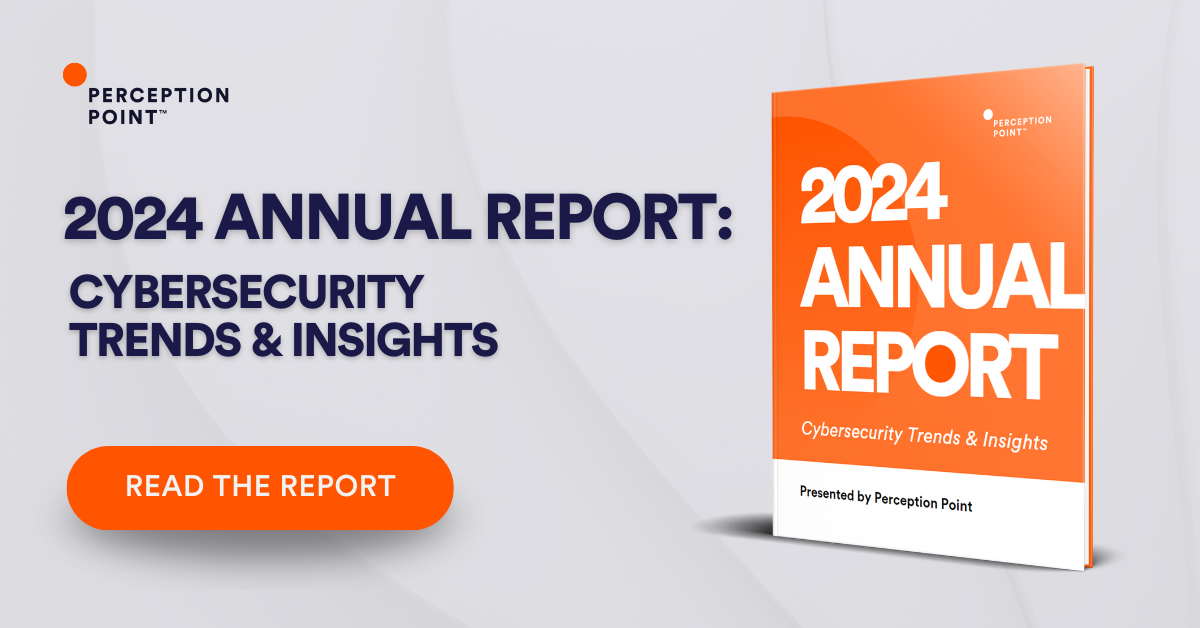What is Advanced Persistent Threat?
An Advanced Persistent Threat (APT) is a type of cyber attack in which an adversary gains unauthorized access to a network and remains undetected for an extended period of time. APTs are typically carried out by highly skilled and well-funded groups, often sponsored by nation-states, and are designed to compromise the confidentiality, integrity, or availability of sensitive data.
APTs differ from other types of cyber attacks in that they are highly targeted and tailored to specific organizations or individuals. APT attackers typically conduct extensive research on their target and use sophisticated tactics to gain access to the network, such as spear phishing, advanced malware, and zero-day vulnerabilities. Once inside the network, the attackers use various techniques to maintain access and continue their activities without being detected.
APTs are a major concern for organizations because they can result in significant damage, including the theft of sensitive data, disruption of critical systems, and financial losses. To protect against APTs, organizations should implement robust cybersecurity measures, including firewalls, antivirus software, intrusion detection systems, and employee training programs.
This is part of a series of articles about cybersecurity.
In this article
How an Advanced Persistent Threat Works
APT attacks typically follow a multi-step process:
- Reconnaissance: The attacker conducts research on the target organization and its employees to gather as much information as possible. This may involve publicly available information, such as corporate websites and social media profiles, as well as more covert methods, such as phishing campaigns and malware.
- Initial compromise: The attacker uses the information gathered during the reconnaissance phase to craft a tailored attack, such as a spear phishing email or a zero-day exploit. The goal of the initial compromise is to gain a foothold in the target network.
- Establishing persistence: Once the attacker has gained access to the network, they will work to maintain their presence and ensure they can continue to access the network even if their initial point of entry is discovered and closed. This may involve installing malware or creating backdoors to allow for future access.
- Escalating privileges: The attacker will typically try to gain higher levels of access to the network by exploiting vulnerabilities or using stolen credentials to escalate their privileges.
- Data exfiltration: The attacker’s ultimate goal is typically to steal sensitive data from the network. This may involve transferring the data directly to a remote server controlled by the attacker, or using other methods to exfiltrate the data.
- Covering tracks: To avoid detection, the attacker will often take steps to erase their tracks, such as deleting log files or using encryption to conceal their activities.

Tal ZamirCTO, Perception Point
Tal Zamir is a 20-year software industry leader with a track record of solving urgent business challenges by reimagining how technology works.
TIPS FROM THE EXPERTS
- Regular employee phishing simulations
Conduct ongoing phishing simulations that are updated with the latest tactics used by threat actors. These simulations should be highly realistic and tailored to your organization’s specific risks to condition employees to recognize and report potential threats effectively. - Advanced behavioral analysis and anomaly detection
Implement advanced security solutions that employ machine learning models that learn and detect deviations from normal user and entity behavior across the network. These next-gen solutions can identify sophisticated threats that traditional signature-based systems might miss, particularly when attackers use legitimate credentials. - Proactive threat hunting teams
Establish a dedicated threat hunting team that actively seeks out signs of APTs within your environment or use AI-powered threat hunting systems in conjunction with your security team. Rather than waiting for alerts, these teams analyze logs, network traffic, and endpoint behavior for any indicators of compromise, even if subtle. - Frequent and randomized vulnerability assessments
Move beyond scheduled vulnerability assessments and conduct them more frequently and randomly. This reduces the window of opportunity for APTs to exploit known vulnerabilities. Use both automated scanning tools and manual assessments to catch vulnerabilities that may go unnoticed.
Warning Signs of APT
Targeted Spear-Phishing Emails
Spear-phishing is a type of social engineering attack in which the attacker sends a targeted email to a specific individual or group, usually with the goal of tricking the recipient into clicking on a malicious link or attachment. The email is designed to appear legitimate and may contain personalized information or appear to be from a trusted source, making it more likely that the recipient will take the desired action.
Targeted spear phishing emails are a warning sign of an APT because they are often used as a means to gain initial access to the target network. If an APT attacker is using spear phishing as a means to gain access to the network, the emails they send may be highly targeted and tailored to the specific organization or individuals they are targeting. They may contain information about the target that is only available through extensive research, such as job titles, company names, or personal details.
Unusual Logins
Odd logins can be a warning sign of an APT because they may indicate that an unauthorized user has gained access to the network. APT attackers often try to maintain access to the network for an extended period of time.
If an APT attacker has gained access to the network, they may attempt to log in from different locations or devices than those typically used by legitimate users. They may also try to use different username and password combinations to access various systems and data.
Widespread Backdoor Trojans
APT attackers often try to maintain access to the network for an extended period of time, and one way they may do this is by installing malware or creating backdoors that allow them to continue accessing the network even if their initial point of entry is discovered and closed.
Backdoor trojans are a type of malware that allows an attacker to gain unauthorized access to a system or network. They can be delivered through various means, such as email attachments, websites, or software downloads. Once installed, the trojan can allow the attacker to perform various actions, such as executing commands, transferring files, and accessing sensitive data.
Information Moved
APT attackers often have specific targets in mind and are motivated by the theft of sensitive data or other forms of intellectual property. Here are some signs to watch for:
- Unexpected data transfers: If data is being transferred to or from the network in a way that is not consistent with normal business operations, it may be a sign of an APT attack. This may include transfers to unfamiliar locations or devices, or transfers of large amounts of data that are not consistent with typical usage patterns.
- Unauthorized access to sensitive information: If unauthorized users are accessing sensitive data or systems, it may be a sign of an APT attack. This may involve access to financial or personal information, proprietary data, or systems that are not normally accessed by certain individuals.
- Changes to file permissions: If there are changes to file permissions that are not consistent with normal business operations, it may be a sign of an APT attack. For example, if files that were previously only accessible to certain users are now accessible to everyone, it may indicate that an attacker has gained access to the network and is trying to exfiltrate data.
- Suspicious network activity: If there is unusual activity on the network, such as an increase in traffic to or from unfamiliar locations or devices, it may be a sign of an APT attack. This may include attempts to communicate with command and control servers or other indicators of malicious activity.
Data Clumped and Ready for Export
Advanced Persistent Threats (APTs) may clump data for export as part of their attack strategy because it allows them to steal large amounts of data quickly and efficiently. APT attackers are typically motivated by the theft of sensitive data or other forms of intellectual property, and clumping data makes it easier for them to exfiltrate the data from the network.
APTs may clump data in a variety of ways, such as by bundling data files together, compressing the data to reduce its size, or using encryption to conceal the data. Once the data is clumped, the APT may use various methods to export the data from the network, such as DNS tunneling, cloud storage accounts, or physical removable media.
Advanced Persistent Threat: 6 Protection and Prevention Tips
Traffic Monitoring
Traffic monitoring is a security measure that involves monitoring the flow of data in and out of a network in order to detect and prevent security threats. It can be used to defend against APTs by allowing organizations to identify unusual patterns or activity that may indicate an APT attack is underway.
To use traffic monitoring to defend against APTs, organizations can implement tools and technologies that allow them to monitor network traffic in real-time and identify any anomalies or indicators of malicious activity. This may include monitoring traffic to and from unfamiliar locations or devices, tracking the flow of data to and from known APT command and control servers, and analyzing traffic patterns to identify any unusual behavior.
By monitoring traffic, organizations can identify APT attacks early and take steps to prevent them from causing damage. This may involve disconnecting affected devices, changing passwords, and implementing additional security measures, such as firewalls and intrusion detection systems. It may also be necessary to alert law enforcement and cybersecurity professionals if the attack is severe or involves the theft of sensitive data.
Implement Network and Endpoint Protection Tools
Network and endpoint protection tools can be used to defend against APTs by identifying and alerting administrators to unusual activity or indicators of malicious activity.
Some examples of network and endpoint monitoring and detection tools include:
- Firewalls: Firewalls are security devices that monitor and control incoming and outgoing network traffic based on predetermined security rules. They can be used to block unauthorized access and alert administrators to potential threats.
- Intrusion detection systems: Intrusion detection systems are tools that monitor network traffic and alert administrators to potential security breaches. They can be configured to detect specific types of activity, such as attempts to access restricted data or systems, or communication with known APT command and control servers.
- Antivirus software: Antivirus software is designed to scan for and remove malware from endpoint devices, including APT malware. It can be configured to perform regular scans and alert administrators to any potential threats.
- Network behavior analysis tools: Network behavior analysis tools monitor network traffic and analyze it for unusual patterns or activity that may indicate an APT attack is underway. They can be configured to alert administrators to potential threats in real-time.
Penetration Testing
Penetration testing, also known as pen testing, is a security measure that involves simulating an attack on a network or system to identify vulnerabilities and assess the effectiveness of security measures. It can be used to defend against APTs by helping organizations identify and address vulnerabilities that APT attackers may exploit.
To use penetration testing to defend against APTs, organizations can hire cybersecurity professionals or use specialized software to conduct a simulated attack on their networks or systems. The professionals or software will attempt to identify and exploit vulnerabilities, such as unpatched software or weak passwords, and will report on the results of the test.
By conducting regular penetration testing, organizations can identify and address vulnerabilities before APT attackers can exploit them. This can help prevent APTs from gaining a foothold in the network and causing damage.
Access Control
Access control is a security measure that involves limiting access to resources and systems to authorized users only. It can be used to defend against Advanced Persistent Threats (APTs) by preventing unauthorized users from gaining access to sensitive data or systems and by limiting the actions that authorized users can take.
In order to use access control to defend against APTs, organizations can implement various technologies and practices, such as:
- User authentication: User authentication involves verifying the identity of users before allowing them to access resources or systems. This can be done through methods such as passwords, biometrics, or multi-factor authentication (MFA).
- Role-based access control (RBAC): Role-based access control involves assigning permissions to users based on their role within the organization. This allows organizations to limit the actions that users can take based on their level of access and can prevent unauthorized users from gaining access to sensitive data or systems.
- Access control lists (ACL): Access control lists are lists of permissions that specify which users or groups of users can access specific resources or systems. By configuring access control lists, organizations can control which users have access to specific resources and can prevent unauthorized users from gaining access.
Sandboxing
Sandboxing is a security measure that involves creating a separate, isolated environment in which to run potentially malicious software or code. It can be used to defend against APTs by allowing organizations to safely test and analyze suspicious software or code without exposing their networks or systems to risk.
To use sandboxing to defend against APTs, organizations can use specialized software or hardware to create a virtual environment in which to run suspicious software or code. The software or code will be isolated from the rest of the network or system, so if it is malicious, it will not be able to access or compromise other resources.
By using sandboxing, organizations can safely analyze and test suspicious software or code to determine whether it is malicious and take appropriate action. This can help prevent APTs from gaining a foothold in the network and causing damage.
CPU-Level Analysis
CPU-level analysis is a security measure that involves analyzing the behavior of software or code at the level of the central processing unit (CPU) in order to identify potential security threats. It can be used to defend against APTs and can help organizations identify zero day attacks, which are attacks that exploit vulnerabilities that have not yet been publicly disclosed or patched.
To use CPU-level analysis to defend against APTs and identify zero day attacks, organizations can use specialized software or hardware tools to monitor and analyze the behavior of software or code at the CPU level. These tools can be configured to detect indicators of malicious activity, such as attempts to access restricted data or systems, or communication with known APT command and control servers.
By using CPU-level analysis, organizations can identify and analyze APT malware and other malicious code before it can cause damage. This can help prevent APTs from gaining a foothold in the network and can help organizations respond to APT attacks more effectively.
An Advanced Persistent Threat (APT) is a type of cyber attack in which an adversary gains unauthorized access to a network and remains undetected for an extended period of time. APTs are typically carried out by highly skilled and well-funded groups, often sponsored by nation-states, and are designed to compromise the confidentiality, integrity, or availability of sensitive data.
APT attacks typically follow a multi-step process:
1. Reconnaissance: The attacker conducts research on the target organization and its employees to gather as much information as possible. This may involve publicly available information, such as corporate websites and social media profiles, as well as more covert methods, such as phishing campaigns and malware.
2. Initial compromise: The attacker uses the information gathered during the reconnaissance phase to craft a tailored attack, such as a spear phishing email or a zero-day exploit. The goal of the initial compromise is to gain a foothold in the target network.
3. Establishing persistence: Once the attacker has gained access to the network, they will work to maintain their presence and ensure they can continue to access the network even if their initial point of entry is discovered and closed. This may involve installing malware or creating backdoors to allow for future access.
4. Escalating privileges: The attacker will typically try to gain higher levels of access to the network by exploiting vulnerabilities or using stolen credentials to escalate their privileges.
5. Data exfiltration: The attacker’s ultimate goal is typically to steal sensitive data from the network. This may involve transferring the data directly to a remote server controlled by the attacker, or using other methods to exfiltrate the data.
6. Covering tracks: To avoid detection, the attacker will often take steps to erase their tracks, such as deleting log files or using encryption to conceal their activities.
Here are a few tell-tale signs of an advanced persistent threat:
– Targeted Spear-Phishing Emails
– Unusual Logins
– Widespread Backdoor Trojans
– Information Moved
– Data Clumped and Ready for Export
– Traffic Monitoring
– Implement Network and Endpoint Protection Tools
– Penetration Testing
– Access Control
– Sandboxing
– CPU-Level Analysis

























